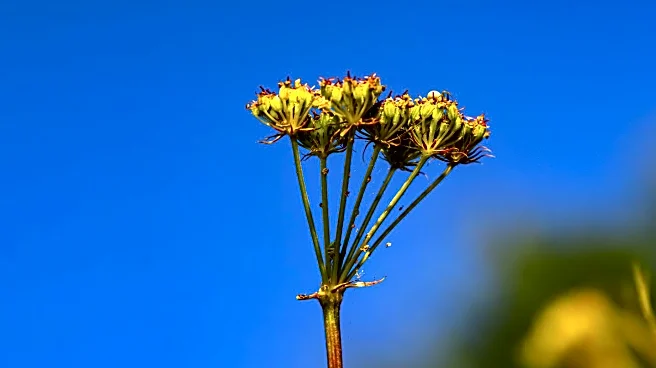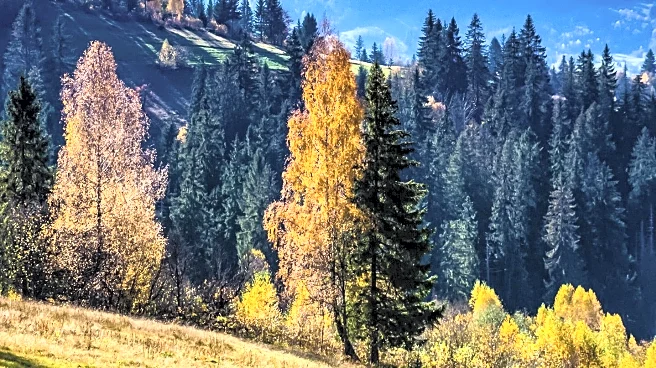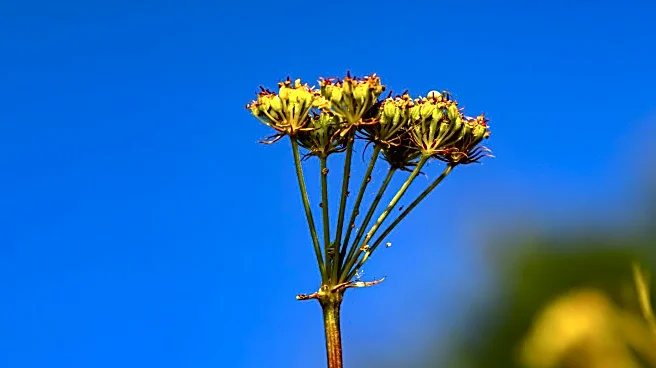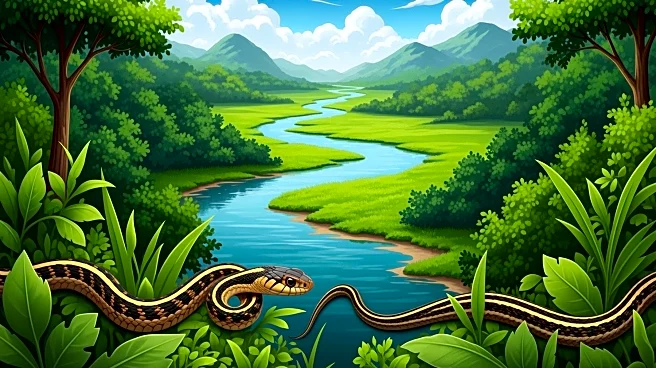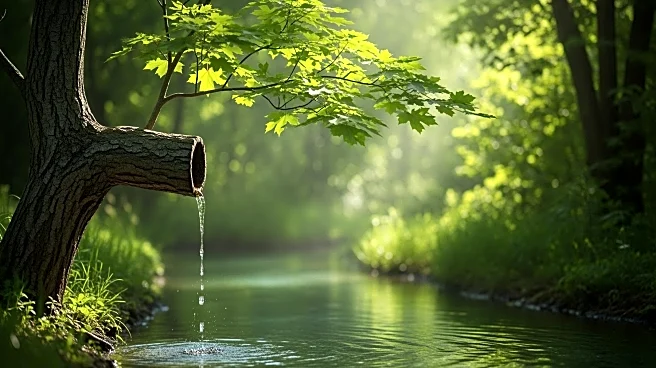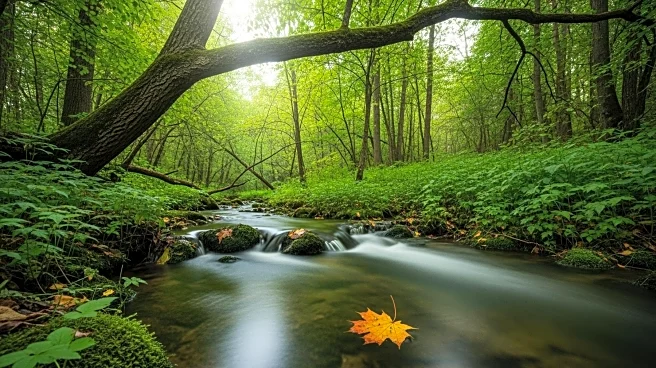What's Happening?
The article discusses the folklore surrounding woolly bear caterpillars and their supposed ability to predict winter weather. This belief originated from a 1948 article by Dr. Charles Curran, which suggested that the caterpillar's coloration could indicate
the severity of the upcoming winter. However, this folklore is not scientifically supported, as the caterpillar's color is determined by its age and species rather than weather conditions. The article also highlights the presence of various plants and shrubs in Pennsylvania, such as burning bushes and pineapple sage, which attract wildlife and contribute to the local ecosystem.
Why It's Important?
The folklore surrounding woolly bear caterpillars reflects a broader cultural interest in natural indicators of weather patterns. While scientifically inaccurate, such beliefs can influence public perception and engagement with local wildlife and ecosystems. The discussion of non-native plants like burning bushes and pineapple sage underscores the importance of understanding and managing invasive species, which can impact native biodiversity. This awareness is crucial for conservation efforts and maintaining ecological balance in regions like Pennsylvania.
What's Next?
As the folklore persists, it may continue to influence local traditions and community activities centered around nature and wildlife observation. Efforts to educate the public about the scientific realities of weather prediction and the ecological impact of invasive species could lead to more informed conservation practices. Additionally, the ongoing interest in native and non-native plants may drive further research and policy development regarding biodiversity and habitat preservation.
Beyond the Headlines
The cultural fascination with woolly bear caterpillars highlights the intersection of science and folklore, illustrating how traditional beliefs can coexist with scientific understanding. This dynamic can foster community engagement with environmental issues, encouraging individuals to explore and appreciate the natural world. The article also touches on the ethical considerations of planting non-native species, prompting discussions about responsible gardening and land management practices.
